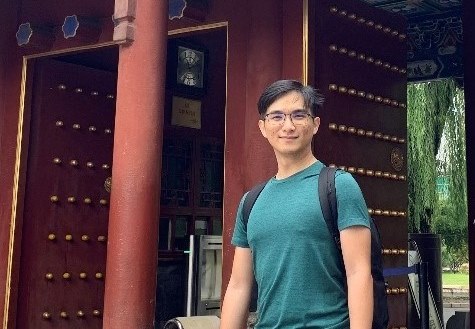
October 9, 2019, by Lisa Chin
My research attachment in China – Part II
This post is contributed by Wong Zheng Wei, recipient of the International Research Collaboration Award (IRCA) 2019 and PhD student from the School of Pharmacy.
It is the second part of a series of posts about his research attachment in a world-leading laboratory within the Department of Material Science and Engineering at Peking University, China.
My research attachment in China – Part I
One Nation, One China. Just this past week, the citizens of China celebrated the nation’s 70th Independence Day, and the annual parade (more precisely, large-scale military parade) was held in its capital, Beijing. In other words, the city was “busy”; major roads were closed, subway stations shut down, and count the massive influx of local tourists into the city. But, I was still able to follow the spectacle (well, through the screen of my laptop) along with the rest of the world, as we witnessed the magnificence and military prowess of the Superpowered Nation. In retrospect, I had never seen such unwavering patriotism towards a nation nor the exceptional unity of the masses. Everything was somewhat overwhelming!
Over the past two weeks, I managed to take a half-day leave from work to experience Beijing right before the Independence Day feat, and I chose to spend it in the district of Qianmen, for its unique cultural significance. The highlights are as mentioned: visited Tiananmen square, gazed into the portrait of Mao at the front of the Tiananmen Tower, took touristy shots of the Great Hall of People, Monument of the People’s Heroes, Chairman Mao’s Mausoleum and more, and sipped coffee by Dashilar street. A time well-spent, off work.
In the lab, research progression has been slowing down since last week as some research associates were already in the holiday mood, and most of the lab facilities were closed for the 9-day holiday. This meant that research work was limited to the “small-stuff”. For me, this was the time to analyse the morphological structure of my previously synthesised magnetic nanoparticles (MNPs) with transmission electron microscopy (TEM), and the functionalisation of the MNPs. The results of the TEM displayed almost spherical MNPs with uniform size distribution, or as the postdoctoral researcher would say, 80% perfection. Nevertheless, the functionalisation step was rather dubious, right from the selection of functional group from a list of many, down to the coating process, which was just one from many others. The end-product showed that the MNPs were successfully functionalised as they were soluble in aqueous phase, as opposed to the uncoated MNPs which preferred the organic phase. In my last few weeks, I will test the efficiency of these MNPs in my research.
To end this post, I would once again like to thank the sponsors for this experience, and I look forward to update you on my research progress in two weeks’ time.
About the award
The International Research Collaboration Award (IRCA) is a competitive award to a funded visit, of up to two months duration, with a maximum of MYR 15,000, at a host organisation anywhere in the world that may act as a collaborator for a research project. The host organisation can be any type of organisation (i.e. a university, a research institute, a business, a government department, a charity, a non-governmental organisation).
This year, we offered two doctoral training awards to promote research mobility by enabling the award recipients to undertake a research visit to a leading international research institution of their choice.
About the award recipient
Wong Zheng Wei was announced as one of the winners of the IRCA by Professor Deborah Hall, Vice-Provost of Research and Knowledge Exchange, on 15 July 2019.
Contact us
For any queries or more information, please email us at graduateschool@nottingham.edu.my.
-
Post a comment




